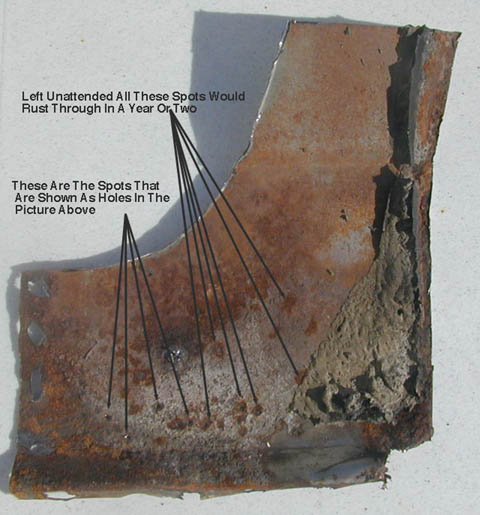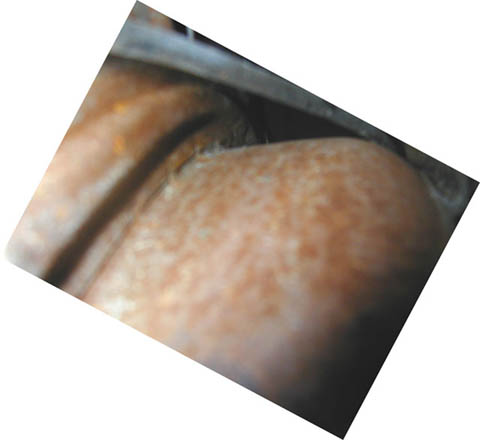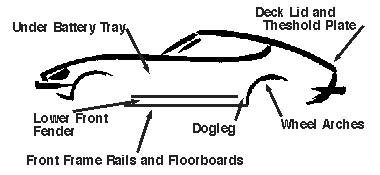"Rust Free 240-Z" How many times have you seen this claim made by people selling a Datsun 240-Z? The truth is, there is no such thing as a "completely" Rust Free Datsun 240-Z. Any steel bodied car that is 30+ years old will have rust working its way from the inside of the body panels out. This is especially true where access to the back side of the panels is not possible.
If the above statement is true - where do we find the rust eating away on our 240-Z's, when it's not easily spotted on the exterior of the car?
The Z shown below exhibited no visible rust when it was completely disassembled and "refreshed" in 1998. This car was all original with 62K miles, purchased from the original owner. It has always been garage kept here in Pinellas County (Clearwater/St. Petersburg) Florida.
Anyone Would Honestly "Call This" A Rust Free 240-Z.
The rear hatch lid threshold plate.
Pictured below is a typical "spot" for corrosion or rust to eat it's way up through the metal from the underside. The problem is, by the time you see a tiny spot on top, the rust has already done its damage, eating its way up from the underside.
Prior to removing the paint, there were just a couple of little bubbles in the paint here. After sanding the paint off, the spot grew to about the size of a silver dollar and it was evident it was rusted through. This damage is most likely caused by exhaust gases raising from the tail pipe, which in turn eat the paint and leave the metal exposed. Then the corrosive gases start to eat the metal.


Below: Rust hole cut out square - so new metal can be welded in-place.

Below: What "looked" like a solid, rust free dog leg turned out having several very tiny "spots" on the otherwise shinny metal. When a small body pick was pressed against these spots they quickly turned into "holes". Rust had eaten its way from the inside out. Left unattended these tiny spots would have turned into a major rust problem, under the new paint. So we removed the dogleg.

Below: Looking at the inside of the dogleg above. Much of the surface was rusted and where dirt accumulated the surface rust has started to eat its way through the sheetmetal. Here you can see that there are more than a couple of spots. Had the visible spots been repaired, the invisible (from the outside) spots would have eaten through in another year or so. Better to replace the panel now.

Below: This is what the inside of the dogleg looks like on an otherwise "rust free" 240-Z.

Below: With the dogleg cut out - I held the camera up in the rear quarter so you can see that surface rust is already there. This will be cleaned and Ospho'ed then spayed with a rust proofing paint before the dogleg is replaced. Caught at this stage, minor surface rust is easy to shop, and its return can be prevented for years to come.

I'll add more to this article later - As I find good examples.
Carl Beck










